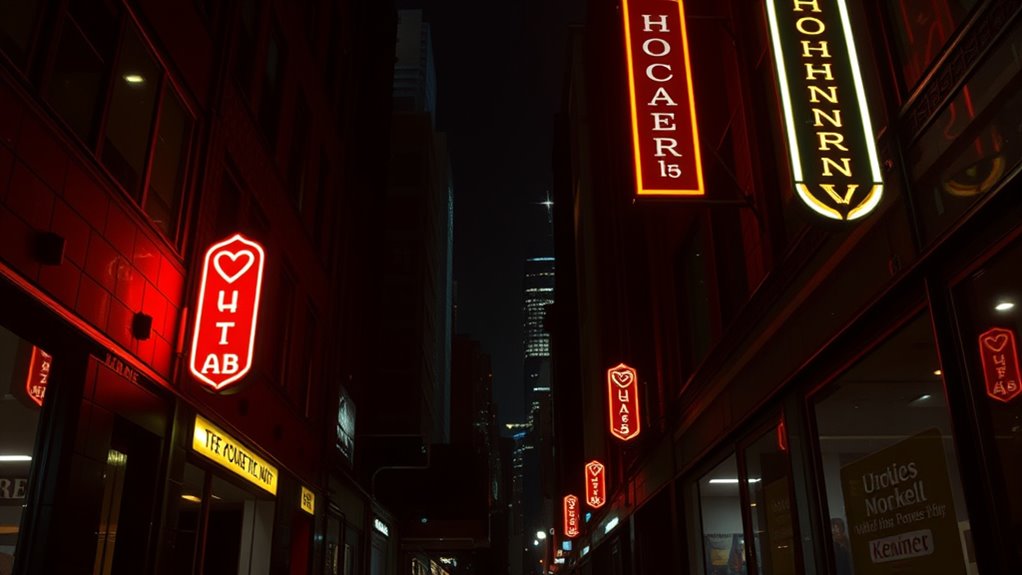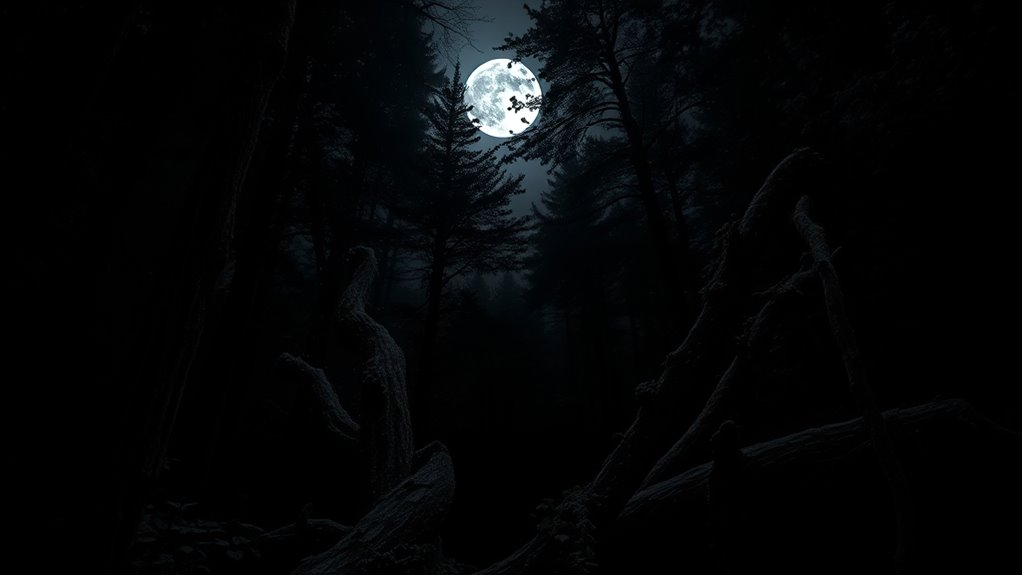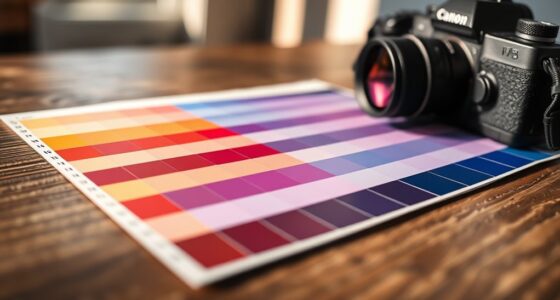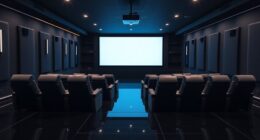To improve black levels and contrast in dark scenes, start by calibrating your display using precise patterns and adjusting settings like contrast, backlight, and local dimming. Use a dark room environment to reduce ambient light, which can wash out dark details. Choosing an OLED screen can also make a big difference, as each pixel emits its own light for true blacks. Keep exploring to discover more tips that will make your dark scenes look even deeper.
Key Takeaways
- Calibrate HDR settings to optimize contrast and black levels for dark scenes.
- Use calibration tools and patterns to fine-tune display contrast and local dimming.
- Enable and adjust local dimming or pixel-level controls on compatible OLED screens.
- Minimize ambient light and dim room lighting to enhance perceived black depth.
- Regularly update display firmware and settings to maintain optimal contrast performance.

If you want your display to deliver deeper blacks and more vibrant contrast, understanding how to improve black levels is essential. One of the most effective ways to achieve this is through proper HDR calibration. High Dynamic Range (HDR) enhances the contrast between the darkest and brightest parts of an image, but to truly benefit from HDR, your display needs to be calibrated correctly. This process involves adjusting settings like brightness, contrast, and local dimming to ensure that black levels are as deep as possible without losing detail in shadowed areas. When you calibrate HDR properly, you enable your display to produce richer blacks, resulting in a more immersive viewing experience, especially during dark scenes. Additionally, using crochet tools can help in creating customized display calibration patterns for more precise adjustments. If your display uses OLED technology, you’re already a step ahead in achieving superior black levels. OLED panels are unique because each pixel emits its own light and can turn off completely, creating perfect black levels. Unlike traditional LED/LCD screens that rely on backlighting, OLEDs can achieve true blacks by shutting off individual pixels entirely. This capability makes OLED displays exceptional for dark scenes, as they can render blacks without any light bleed or blooming artifacts. When combined with proper HDR calibration, OLED screens maximize their potential, delivering contrast ratios that blow away most other display types. The result is a picture with stunning depth and richness, where shadows are deep and details hidden in dark areas are preserved. To optimize your OLED display for darker scenes, start by adjusting the HDR settings to match your viewing environment. This includes selecting the right contrast and backlight levels, ensuring the display isn’t too bright or dim. Most modern OLED TVs also feature local dimming or pixel-level control, which you should enable and fine-tune. Doing so allows individual pixels to dim independently, further improving black levels and contrast. Additionally, make sure your room lighting isn’t too bright, as ambient light can wash out dark details. Dimming the lights or watching in a darker room enhances the perceived contrast and depth of blacks, making dark scenes more realistic and engaging.
Frequently Asked Questions
How Does Ambient Lighting Affect Black Levels?
Ambient light can considerably impact your black levels by washing out dark scenes, making blacks appear gray rather than true black. To counter this, you should control glare and reduce ambient light around your viewing area. Using curtains or dimming lights helps, and glare control measures prevent reflections and stray light from diminishing contrast. Keeping the environment darker ensures your display can produce richer blacks and better contrast for an immersive experience.
Can Calibration Improve Contrast in Existing Displays?
Think of calibration as a magic wand that transforms your display into a window to another world. Yes, calibrating screens can considerably enhance contrast, making dark scenes richer and more detailed. By adjusting settings precisely, you optimize black levels and overall picture quality. This process ensures you get the most out of your display, delivering vivid images that truly pop, turning every viewing into an immersive experience.
What Are the Best Settings for Dark Scene Quality?
To improve dark scene quality, start with black level calibration to guarantee deep, true blacks. Adjust contrast settings to enhance detail without losing shadow depth. Use contrast enhancement techniques like local dimming or dynamic contrast if available. Keep your brightness balanced so dark scenes aren’t washed out. Regularly calibrate your display to maintain ideal black levels and contrast, making dark scenes more immersive and visually striking.
Do OLED Screens Inherently Have Better Black Levels?
Like a black velvet curtain, OLED screens naturally offer better black levels. You’ll notice deep, uniform blacks because OLED pixels emit their own light. However, black uniformity can sometimes be affected by panel aging, causing slight clouding or blooming over time. While OLEDs excel initially, they may develop these issues, so you should handle them with care to maintain ideal contrast and dark scene quality.
How Does HDR Content Influence Contrast in Dark Scenes?
HDR impact markedly enhances contrast in dark scenes by boosting the difference between light and dark areas. You’ll notice deeper blacks and brighter highlights, making details stand out more vividly. This contrast enhancement creates a more immersive viewing experience, especially in shadowy or dimly lit scenes. When you watch HDR content, it dynamically adjusts brightness and contrast, giving you richer, more realistic visuals that bring dark scenes to life.
Conclusion
By mastering black levels and contrast, you reveal the true soul of dark scenes, turning shadows into a canvas of depth and mystery. When you fine-tune these settings, you’re not just adjusting pixels—you’re awakening the hidden drama lurking in every frame. Think of it as revealing the universe’s secrets in your own living room, where darkness becomes a gateway to vibrant storytelling. Embrace these techniques, and watch your scenes come alive with richer, more immersive depth.









